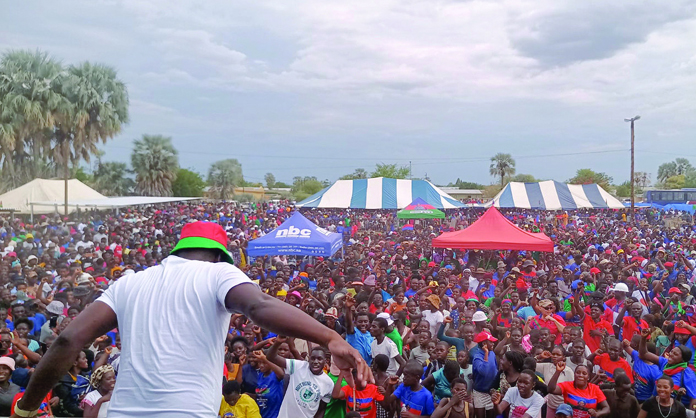The Namibia Statistics Agency recently announced a significant milestone for the nation’s economy – a GDP increase of N$5,3 billion in the first quarter of this year compared to the same period in 2023.
On the surface, this growth seems to signal a positive economic trajectory. However, a deeper analysis reveals that this growth is fragile and overshadowed by a myriad of underlying issues that continue to hinder sustainable development.
A significant portion of Namibia’s revenue is being directed towards servicing the national debt.
This allocation of funds severely restricts the government’s ability to invest in essential public services such as healthcare, education and infrastructure.
The intention to borrow more exacerbates this issue, potentially trapping the country in a vicious cycle of debt that diverts funds from pressing needs and stymies long-term economic progress.
- • Valueless Export of Raw Materials
Namibia’s reliance on exporting raw materials instead of value-added products presents another economic vulnerability.
The export of raw materials yields lower returns compared to processed goods, resulting in missed opportunities for higher revenue and job creation.
Developing a robust manufacturing sector that adds value to our natural resources could significantly enhance economic resilience and reduce dependency on volatile commodity markets.
- • Inequality of Opportunity
Economic growth that fails to address inequality is inherently unstable.
In Namibia, opportunities are unevenly distributed, creating a significant disparity between different segments of the population.
This inequality is not just a moral issue but an economic one: It hampers overall productivity and social cohesion.
Inclusive policies that ensure equal access to education, healthcare and employment are crucial for translating GDP growth into widespread prosperity.
Namibia’s high unemployment rate remains a stark reminder of the disconnect between GDP growth and real economic health.
Many Namibians, particularly the youth, are unable to find gainful employment, which fuels poverty and social unrest.
The government’s economic policies must prioritise job creation through support for small and medium enterprises (SMEs), vocational training and investment in sectors with high employment potential.
- • Digital Unproductivity
In today’s digital age, productivity and economic competitiveness are closely tied to technological advancement.
Unfortunately, Namibia lags in digital adoption and innovation, which impedes productivity growth and economic diversification.
Investing in digital infrastructure and education can empower businesses and individuals to participate more effectively in the global economy, driving sustainable growth.
The gap between the wealthy and the poor in Namibia is widening, with income inequality breeding poverty and social instability.
Wealth concentration in the hands of a few undermines economic growth and reduces consumer spending power, which is essential for a thriving economy.
Policies aimed at wealth redistribution, such as progressive taxation and Universal Basic Income Grant (BIG) and social welfare programmes, are necessary to address this imbalance and promote a more equitable society.
- • Lack of Transformative Economic Policies
Namibia’s economic policies have often been reactive rather than proactive.
There is a pressing need for transformative policies that not only respond to immediate challenges such as the current drought but also lay the groundwork for long-term sustainable development.
This includes diversifying the economy away from a reliance on natural resources, fostering innovation and creating a business environment conducive to entrepreneurship and investment.
Resource allocation in Namibia has historically favoured certain sectors and regions over others, exacerbating regional disparities and limiting comprehensive economic development.
A more balanced approach to resource allocation, ensuring that all regions and sectors receive adequate support and investment, is crucial for national cohesion and economic stability.
- • A Limited Metric
While GDP growth is often hailed as the ultimate indicator of economic health, it is a limited metric that does not capture the full pulse of the economy.
This is particularly true in Namibia, where a significant portion of economic activity occurs in the informal sector, which is predominantly driven by women.
Recognising and supporting the informal economy through innovative initiatives and social protections can lead to a more inclusive and accurate representation of economic health.
- • Looking Ahead
While the GDP growth of N$5,3 billion is noteworthy, it is a superficial gain in the face of deep-rooted economic challenges.
Addressing the current economic challenges is crucial for converting this fragile growth into sustainable development.
A comprehensive approach that goes beyond GDP figures is essential for fostering a resilient and inclusive economy that benefits all Namibians.
- * Ndumba J Kamwanyah studies the interplay of social welfare policy, democracy and development.
Stay informed with The Namibian – your source for credible journalism. Get in-depth reporting and opinions for
only N$85 a month. Invest in journalism, invest in democracy –
Subscribe Now!






